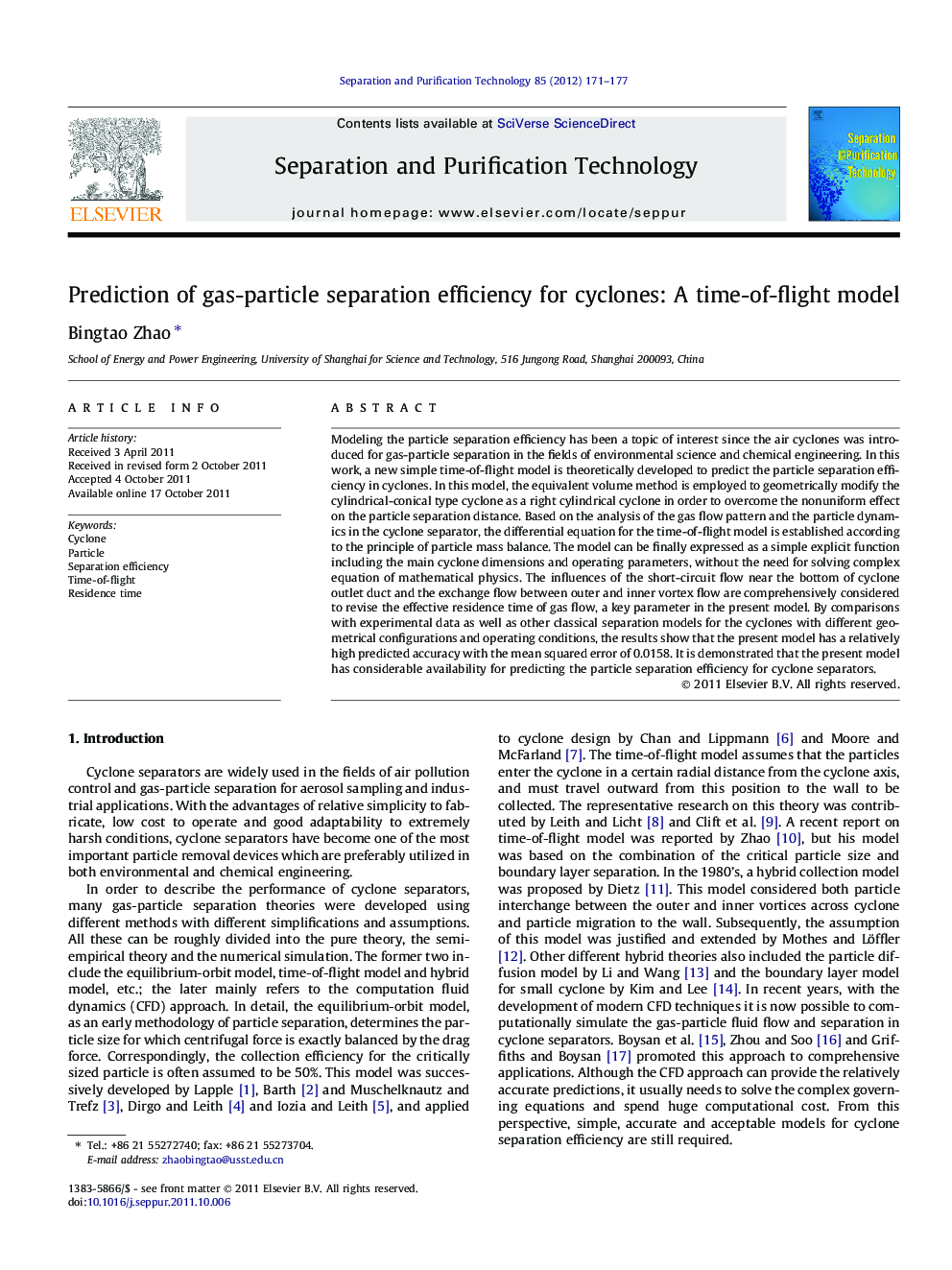| کد مقاله | کد نشریه | سال انتشار | مقاله انگلیسی | نسخه تمام متن |
|---|---|---|---|---|
| 642396 | 1457034 | 2012 | 7 صفحه PDF | دانلود رایگان |

Modeling the particle separation efficiency has been a topic of interest since the air cyclones was introduced for gas-particle separation in the fields of environmental science and chemical engineering. In this work, a new simple time-of-flight model is theoretically developed to predict the particle separation efficiency in cyclones. In this model, the equivalent volume method is employed to geometrically modify the cylindrical-conical type cyclone as a right cylindrical cyclone in order to overcome the nonuniform effect on the particle separation distance. Based on the analysis of the gas flow pattern and the particle dynamics in the cyclone separator, the differential equation for the time-of-flight model is established according to the principle of particle mass balance. The model can be finally expressed as a simple explicit function including the main cyclone dimensions and operating parameters, without the need for solving complex equation of mathematical physics. The influences of the short-circuit flow near the bottom of cyclone outlet duct and the exchange flow between outer and inner vortex flow are comprehensively considered to revise the effective residence time of gas flow, a key parameter in the present model. By comparisons with experimental data as well as other classical separation models for the cyclones with different geometrical configurations and operating conditions, the results show that the present model has a relatively high predicted accuracy with the mean squared error of 0.0158. It is demonstrated that the present model has considerable availability for predicting the particle separation efficiency for cyclone separators.
Figure optionsDownload as PowerPoint slideHighlights
► A simplified time-of-flight model is developed to predict cyclone efficiency.
► Equivalent cyclone geometry is used to overcome the nonuniform separation distance.
► Shortcircuit flow and exchange flow are considered to revise the residence time.
► Compared results show that the present model has relatively high predicted accuracy.
Journal: Separation and Purification Technology - Volume 85, 2 February 2012, Pages 171–177